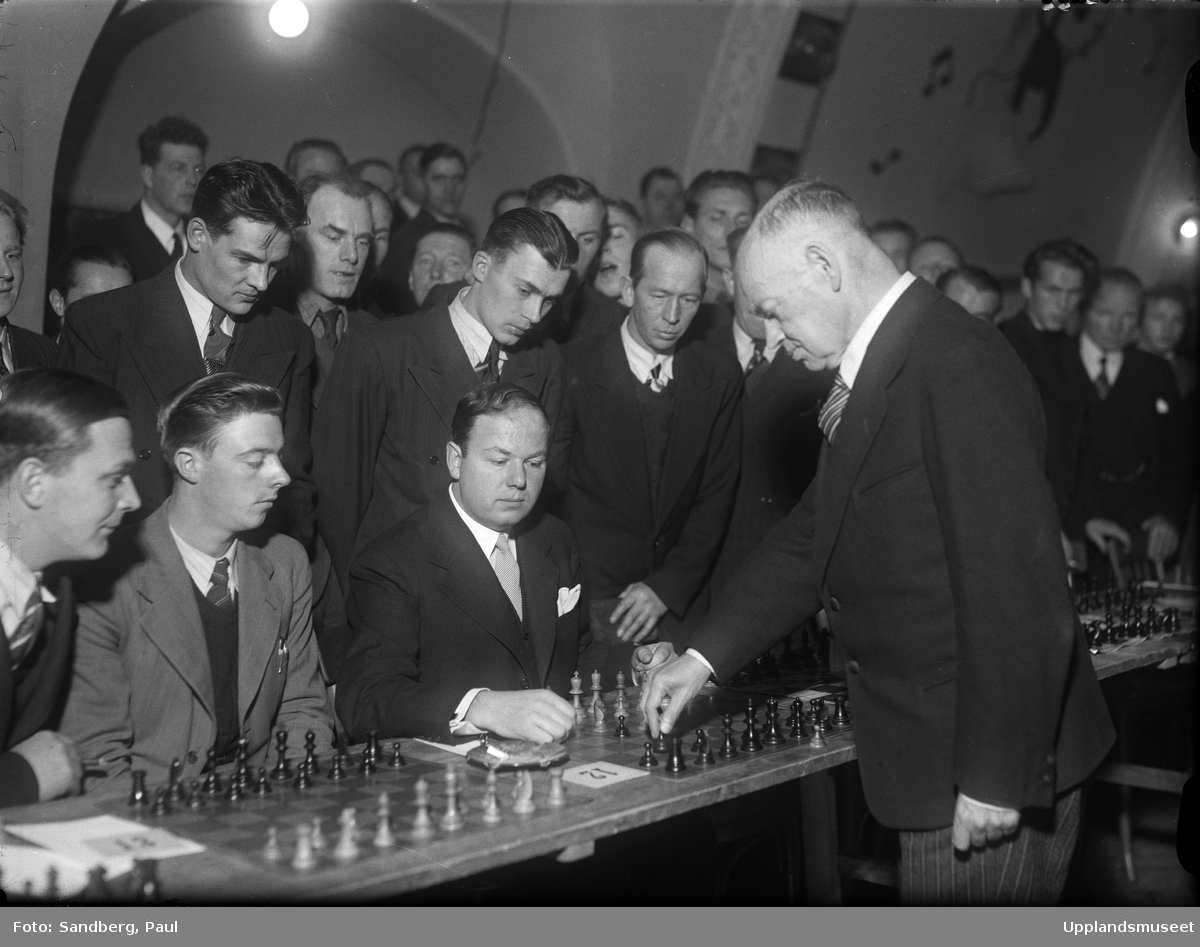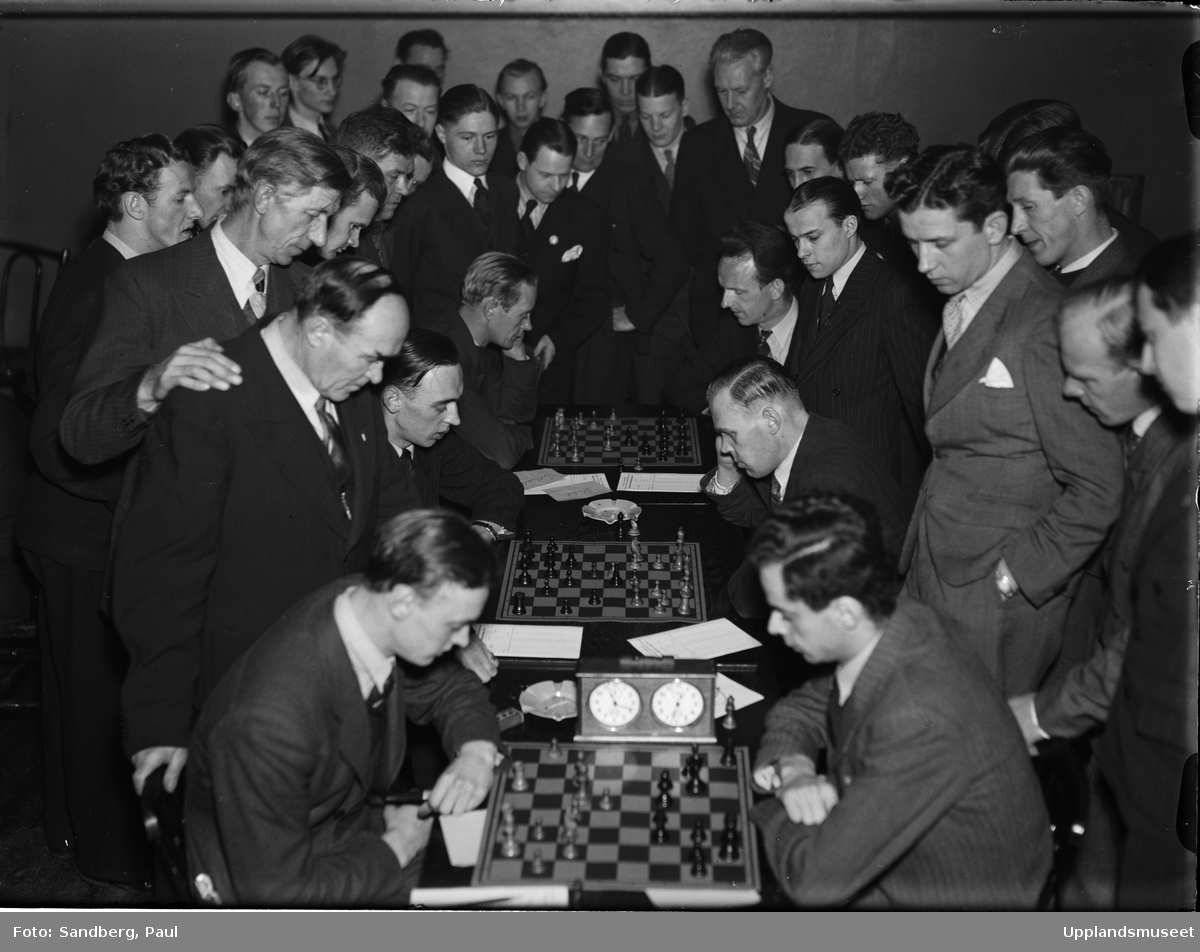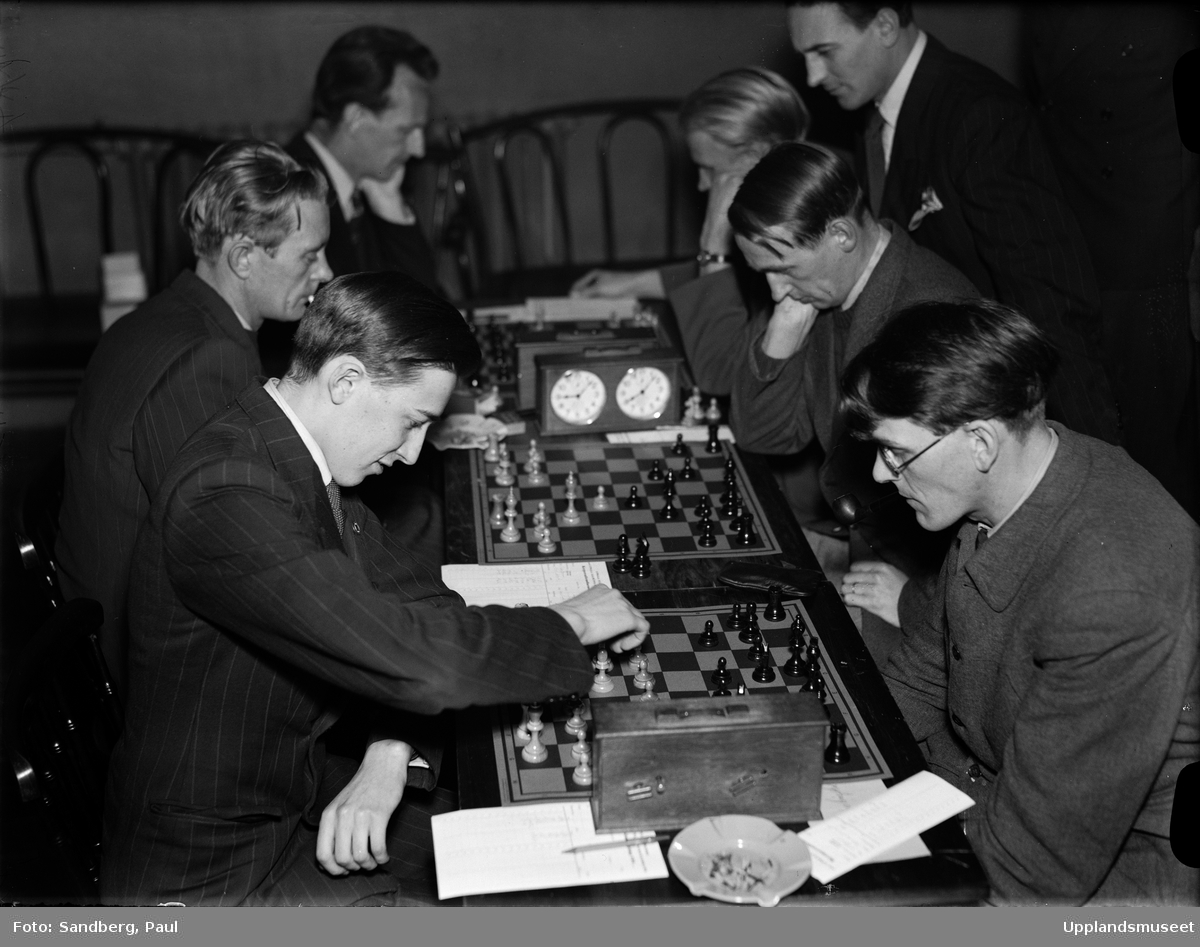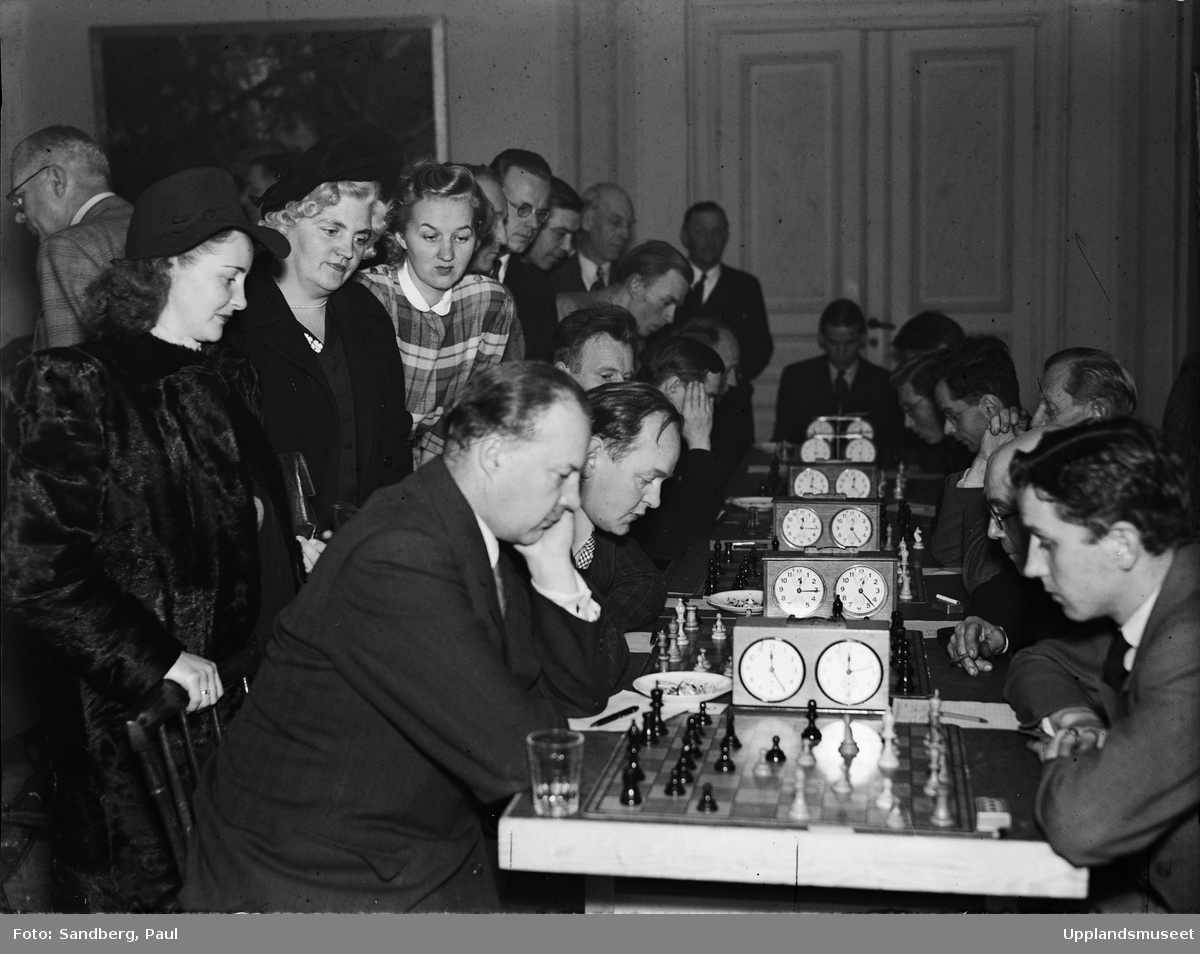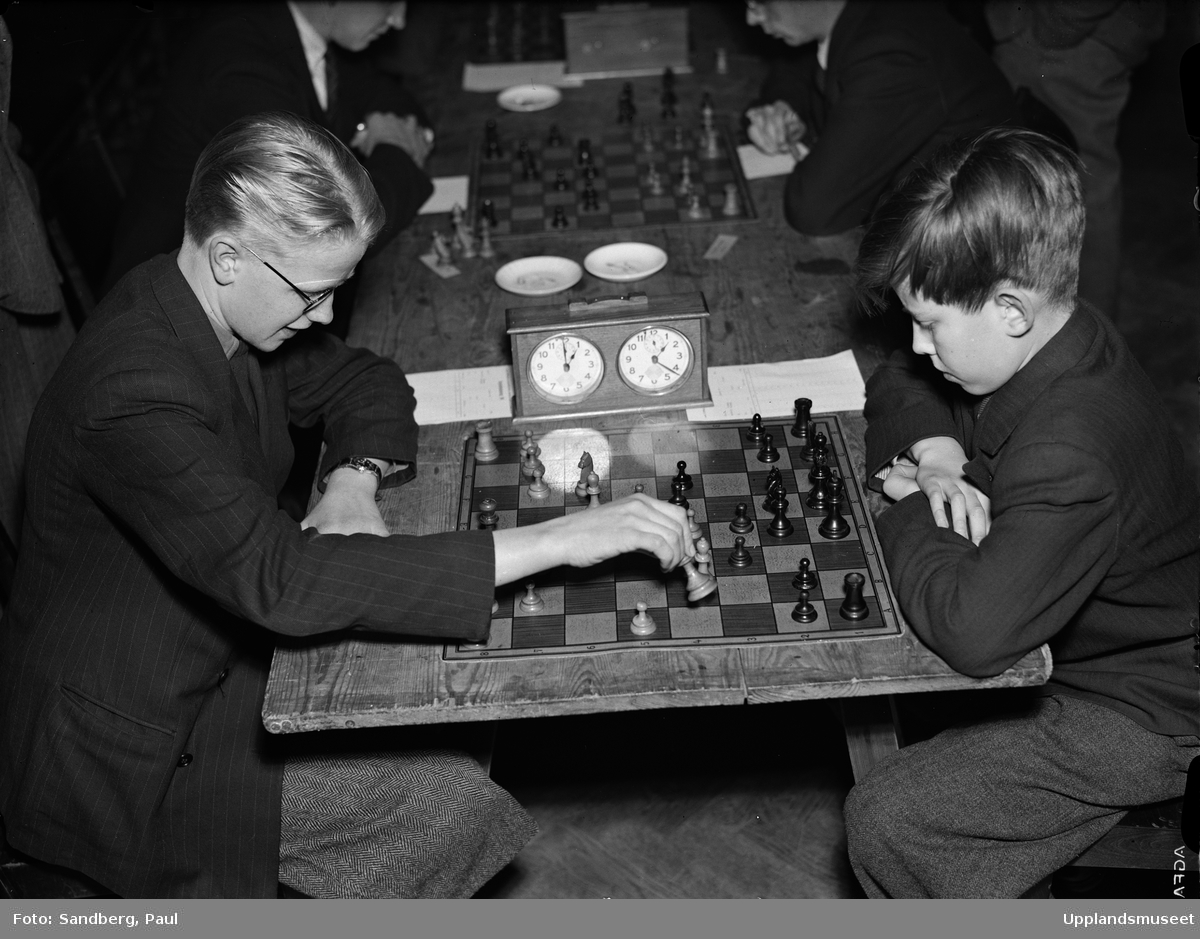Upsala is a city near Stockholm, Sweden, famous for the University of Upsala, which was founded in 1477 and the Upsala Cathedral, the largest in Europe with towers that reach 118 m in height.
Although in relation to chess, it is famous for at least two pieces of information:
First, to be the hometown of the Swedish film director Ingmar Bergman, author of the film “The Seventh Seal” a cult film for every self-respecting chess player, I refer you to a review written by myself ‘ the seventh seal ‘.
Second, for being located in this wonderful city one of the oldest chess clubs in Sweden, the ‘ Wasa Schackklubb‘ which was founded in 1917, this year in which I write the article, commemorates its 100th anniversary of existence.
Simultaneous chess exhibition by Rudolf Spielmann in Upsala 1941
The ‘Wasa Schackklubb’ has always been a very active club since its birth in terms of chess events – list of simultaneous celebrations. Already in his inauguration he went to the strongest Swedish chess player of the era Gustav Nyholm on January 13, 1917 to perform a simultaneous over 46 tables with a result of 17 games won, 4 tables and 14 losses.
During its existence, Upsala has played at top level chess players such as: Frank Marshall, Gustaf Nyholm, Rudolf Spielmann, Aaron Nimzowitsch, Efim Bogoljubov, Gideon Ståhlberg, Paul Keres, Salo Flohr, Tigran Petrosjan and Ulf Andersson, among many others.
On November 28, 1941, chess simultanies were held by the great master Rudolf Spielmann, the sacrificial artist, the last defending knight of the king’s gambit, a chess giant who passed a delicate situation as a refugee since 1938 in Stockholm , Sweden. On the occasion of the dawn of Nazism, Austrian Jewish Rudolf Spielman had to flee his hometown of Vienna, after the annexation of Austria by Germany in March 1938, after a short stay in Prague where all his belongings were confiscated, he ended up looking asylum in one of the few safe havens in Europe – Sweden -. The result of the simultaneous in Upsala 1941, on 46 boards was 28 won, 12 tables and 6 defeats. A little less than a year later, on August 20, 1942, he died in Stockholm in the greatest poverty, a sad end for a great chess player.
Chess tournaments in Upsala 1943, 1944 and 1945
In the ‘Wasa Schackklubb’ where these photographs, already historical, were taken, numerous chess tournaments were also held. We are especially interested in these, because in the different photographs you can see that the clocks used by the different chess players are chess clocks ‘Gustaf Nyholm’.
The chess clocks ‘Gustaf Nylhom’ began to be manufactured in the 1930s until the outbreak of World War II, assembling machinery of German origin but with a purely Swedish aesthetic and design.
The chess tournaments and different chess events in Sweden during the 1940s were played with this type of clocks, precursors of other models that conserve this same form and design. The sliding bar was very appropriate for the type of games that were held then, in which the speed of the plays was not usual.

